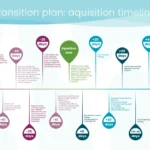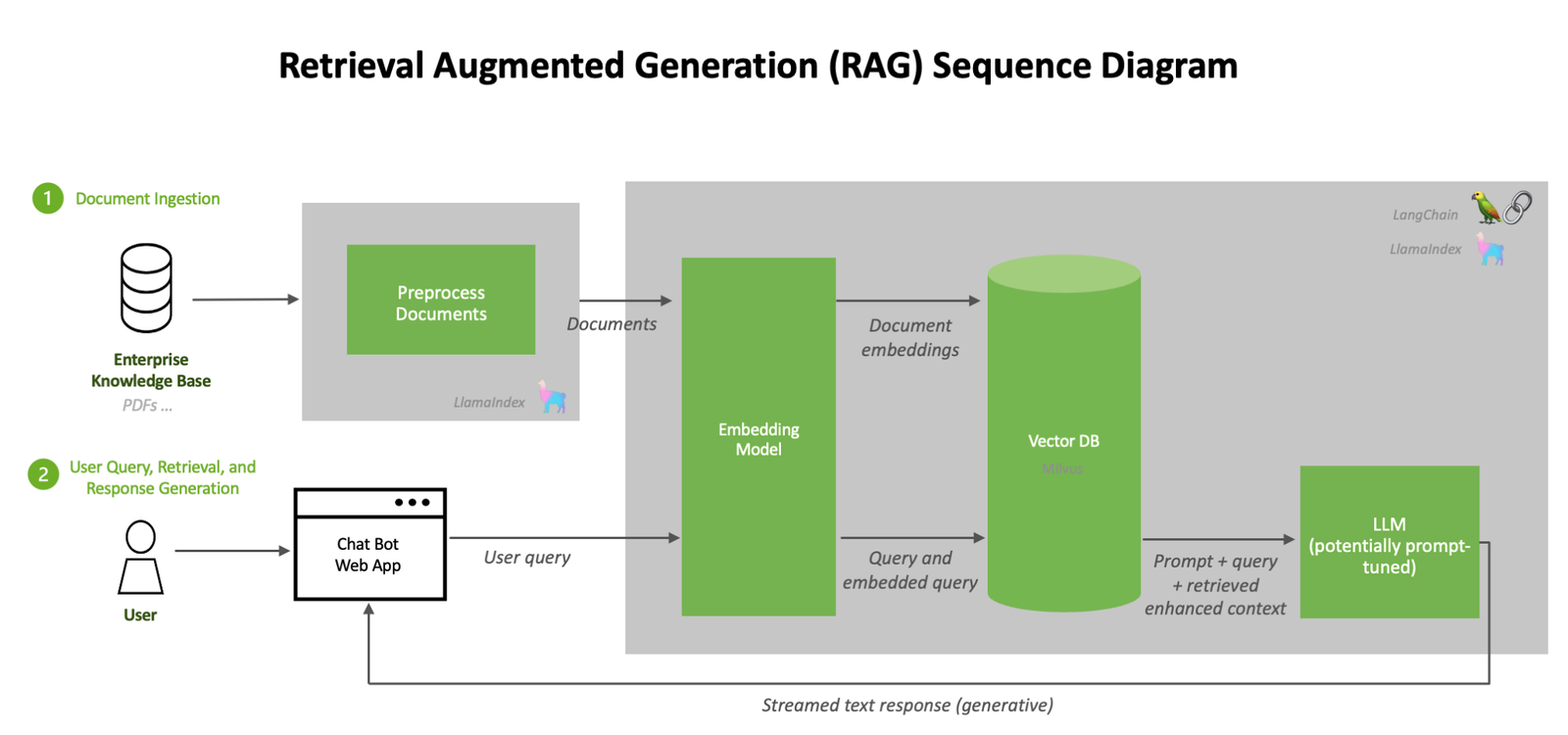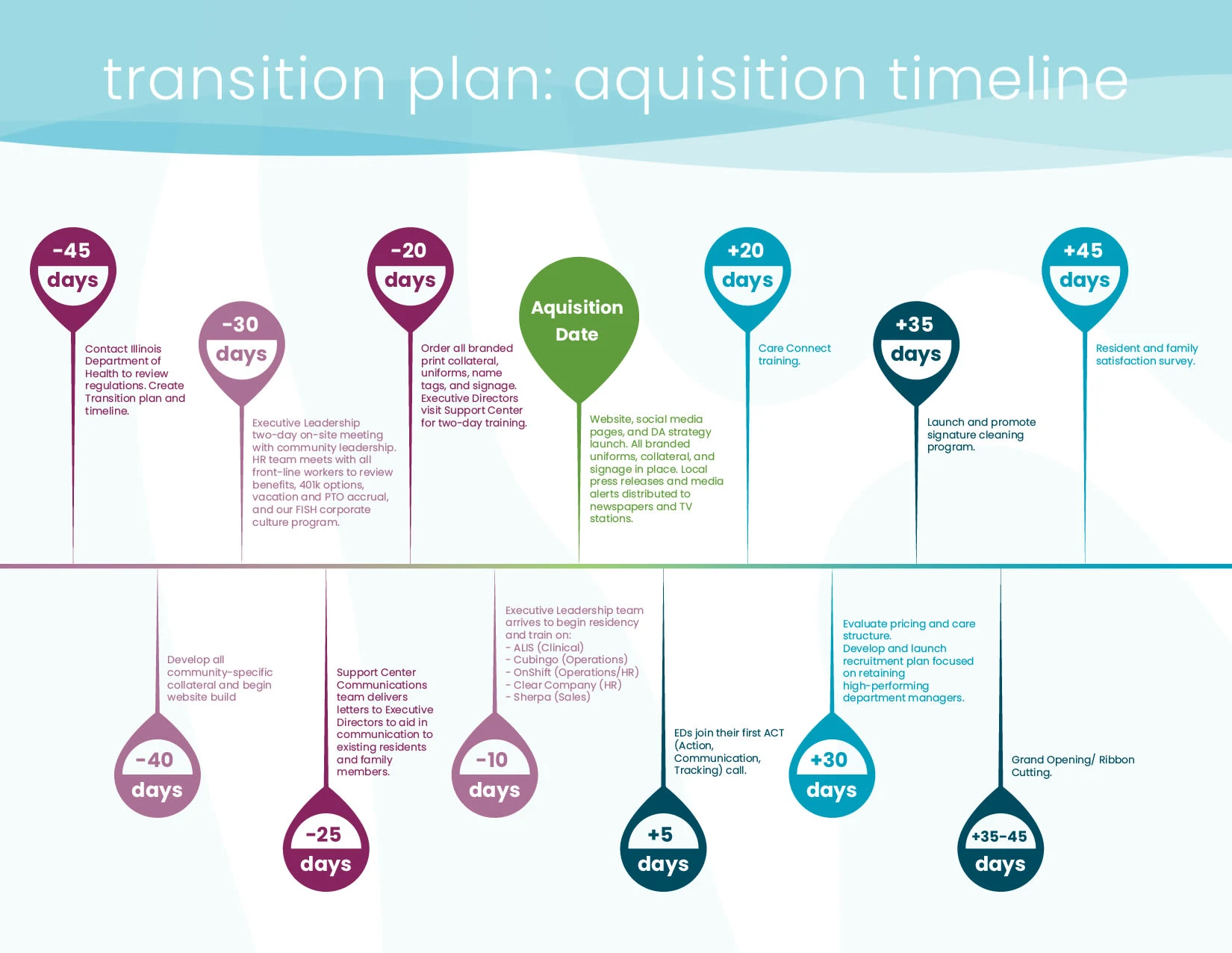RAG (Retrieval-Augmented Generation) architecture is an advanced AI model framework that enhances traditional generative AI by integrating real-time retrieval of external knowledge. This hybrid approach significantly improves the accuracy, relevance, and contextual understanding of AI-generated responses. It is widely employed in natural language processing (NLP) applications, including chatbots, search engines, enterprise knowledge management systems, and AI-driven research tools.
Traditional AI models rely solely on pre-trained datasets, making them prone to generating outdated or incomplete responses. RAG addresses this limitation by retrieving and integrating the most relevant external data before generating responses. This ensures that AI-powered applications remain updated, factually accurate, and highly contextual. As a result, RAG architecture is a transformative technology in AI-driven content creation, decision-making, and automated assistance.
How RAG Architecture Works
Retrieval Mechanism
RAG architecture leverages an intelligent retrieval component that searches vast external knowledge bases, such as databases, indexed documents, or even real-time internet resources. This retrieval process enhances the model’s ability to provide fact-based, context-aware responses rather than solely relying on static pre-trained knowledge.
Indexing and Searching: The system maintains an up-to-date structured database of information, allowing real-time queries to be processed efficiently.
Context Matching: The AI analyzes the user’s query and retrieves relevant passages, documents, or datasets based on semantic similarity and keyword matching.
Data Integration: The most pertinent retrieved content is then passed to the generative model for response formulation, ensuring that AI-generated answers are informed and relevant.
Augmented Generation
The retrieved information is processed by a powerful generative AI model, such as GPT, BERT, or T5. This stage ensures that the final response is:
Factually accurate by incorporating verified and up-to-date knowledge from trusted sources.
Contextually relevant by aligning the generated response with the specific needs of the user’s query.
Linguistically natural by utilizing advanced natural language generation (NLG) techniques to make responses more human-like.
Key Benefits of RAG Architecture
Superior Accuracy and Reliability
Unlike traditional generative AI models that rely solely on historical training data, RAG retrieves live data, significantly reducing misinformation and improving the accuracy of AI-generated responses. This feature is particularly beneficial in domains requiring high factual integrity, such as healthcare, legal research, and technical support.
Enhanced Contextual Awareness
By incorporating real-time knowledge from diverse external sources, RAG ensures that responses are highly relevant to user queries. This eliminates ambiguity and makes interactions more precise, benefiting applications such as customer support, personalized recommendations, and knowledge discovery.
Scalability and Versatility
RAG-based systems are highly adaptable across various industries, from automated content generation to academic research and business intelligence. Organizations can customize the retrieval process to include industry-specific knowledge bases, ensuring that responses align with sector-specific needs.
Reduced AI Hallucination and Bias
One of the major concerns with generative AI models is “hallucination,” where the AI generates plausible but incorrect information. By incorporating verifiable external knowledge, RAG significantly reduces the risk of AI producing misleading or fabricated responses. This makes it a valuable tool for enterprises requiring accurate decision-making support.
Applications of RAG Architecture
AI-Powered Chatbots and Virtual Assistants
RAG-based AI assistants provide highly informative and context-aware interactions. By integrating real-time knowledge retrieval, these systems offer more meaningful customer support, technical assistance, and conversational AI experiences.
Enterprise Knowledge Management
Businesses use RAG-powered AI to automate document retrieval, improve knowledge-sharing across departments, and enhance decision-making processes. Employees can quickly access relevant information, improving operational efficiency and reducing research time.
Healthcare and Medical Research
Medical professionals utilize RAG-driven AI tools to retrieve and analyze medical literature, assisting in accurate diagnoses and evidence-based treatment recommendations. This ensures that healthcare providers have access to the latest clinical research and guidelines.
Legal and Compliance Analysis
Law firms and compliance teams benefit from RAG by quickly accessing legal documents, case studies, and regulatory updates. This enhances efficiency, ensuring that legal professionals remain informed of the latest industry developments.
Academic and Scientific Research
Researchers leverage RAG architecture to retrieve and summarize scientific papers, enabling them to stay updated on advancements in their field without manually sifting through large volumes of publications.
Challenges and Future of RAG Architecture
Computational and Infrastructure Costs
The dynamic retrieval and generation process requires significant computing resources, making large-scale implementations costly. Organizations must invest in high-performance computing infrastructure or cloud-based AI services to run RAG effectively.
Ensuring Data Source Credibility
Since RAG retrieves external data, maintaining source credibility is crucial. AI systems must be designed to prioritize reliable and authoritative sources while filtering out misinformation, ensuring the integrity of generated content.
Advancements in Hybrid AI Models
The future of RAG lies in integrating it with reinforcement learning, multimodal AI, and advanced search algorithms. These enhancements will further improve efficiency, scalability, and contextual awareness, making AI-powered applications even more intelligent and adaptive.
Conclusion
RAG architecture represents a major leap in AI-driven applications, bridging the gap between static knowledge models and real-time information retrieval. Its ability to generate accurate, up-to-date, and contextually relevant responses makes it an indispensable technology for businesses, researchers, and AI developers. As AI continues to evolve, RAG will play a pivotal role in shaping the next generation of intelligent systems, transforming how we interact with and utilize artificial intelligence across industries.











